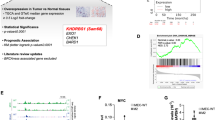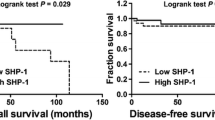Abstract
Purpose
Triple-negative breast cancer (TNBC) has a poor prognosis because of limited treatment options. The combination of a poly ADP ribose polymerase (PARP) inhibitor with a DNA-damaging agent has shown promise in treating TNBC; however, not all patients respond to this combination. The Src protein kinase modulates multiple cancer cell properties and plays a key role in tumorigenic processes. However, Src inhibitors as single agents have shown limited effects in solid tumors. Here, we examined the antitumor effects of the Src inhibitor dasatinib, the PARP inhibitor veliparib, and the DNA-damaging agent carboplatin in TNBC models to try and identify the combination with the most clinical potential.
Methods
Dasatinib, veliparib and carboplatin were tested in TNBC cells in vitro and in xenograft tumors in vivo.
Results
Surprisingly, treatment with the combination of veliparib plus carboplatin led to an increase in Src phosphorylation. Importantly, dasatinib attenuated Src overexpression induced by veliparib plus carboplatin and further inhibited the downstream signaling of Src. In xenograft models, the triple combination of dasatinib with veliparib plus carboplatin showed greater tumor growth inhibitory effects compared with single agents or double combinations. No systemic toxicity was observed in mice treated with the triple combination.
Conclusions
This study emphasizes the merit of evaluating the triple combination therapy, dasatinib with veliparib plus carboplatin, in TNBC clinical trials.






Similar content being viewed by others
Abbreviations
- TNBC:
-
Triple-negative breast cancer
- PARP:
-
Poly ADP ribose polymerase
- HR:
-
Homologous recombination
- IHC:
-
Immunohistochemistry
- pCR:
-
Pathological complete response
References
DeSantis C, Siegel R, Bandi P (2011) Jemal A (2011) Breast cancer statistics. CA Cancer J Clin 61(6):409–418
Miller KD, Siegel RL, Lin CC, Mariotto AB, Kramer JL, Rowland JH, Stein KD, Alteri R, Jemal A (2016) Cancer treatment and survivorship statistics. CA Cancer J Clin 66(4):271–289
Qian XL, Zhang J, Li PZ, Lang RG, Li WD, Sun H, Liu FF, Guo XJ, Gu F, Fu L (2017) Dasatinib inhibits c-src phosphorylation and prevents the proliferation of Triple-Negative Breast Cancer (TNBC) cells which overexpress Syndecan-Binding Protein (SDCBP). PLoS One 12(1):e0171169
Sulaiman A, Wang L (2017) Bridging the divide: preclinical research discrepancies between triple-negative breast cancer cell lines and patient tumors. Oncotarget 8(68):113269–113281
Bianchini G, Balko JM, Mayer IA, Sanders ME, Gianni L (2016) Triple-negative breast cancer: challenges and opportunities of a heterogeneous disease. Nat Rev Clin Oncol 13(11):674–690
Lee A, Djamgoz MBA (2018) Triple negative breast cancer: Emerging therapeutic modalities and novel combination therapies. Cancer Treat Rev 62:110–122
Roy R, Chun J, Powell SN (2011) BRCA1 and BRCA2: different roles in a common pathway of genome protection. Nat Rev Cancer 12(1):68–78
Tahara M, Inoue T, Sato F, Miyakura Y, Horie H, Yasuda Y, Fujii H, Kotake K, Sugano K (2014) The use of Olaparib (AZD2281) potentiates SN-38 cytotoxicity in colon cancer cells by indirect inhibition of Rad51-mediated repair of DNA double-strand breaks. Mol Cancer Ther 13(5):1170–1180
Farmer H, McCabe N, Lord CJ, Tutt AN, Johnson DA, Richardson TB, Santarosa M, Dillon KJ, Hickson I, Knights C et al (2005) Targeting the DNA repair defect in BRCA mutant cells as a therapeutic strategy. Nature 434(7035):917–921
Tutt A, Robson M, Garber JE, Domchek SM, Audeh MW, Weitzel JN, Friedlander M, Arun B, Loman N, Schmutzler RK et al (2010) Oral poly(ADP-ribose) polymerase inhibitor olaparib in patients with BRCA1 or BRCA2 mutations and advanced breast cancer: a proof-of-concept trial. Lancet 376(9737):235–244
Robson M, Im SA, Senkus E, Xu B, Domchek SM, Masuda N, Delaloge S, Li W, Tung N, Armstrong A et al (2017) Olaparib for metastatic breast cancer in patients with a Germline BRCA Mutation. N Engl J Med 377(6):523–533
De P, Sun Y, Carlson JH, Friedman LS, Leyland-Jones BR, Dey N (2014) Doubling down on the PI3 K-AKT-mTOR pathway enhances the antitumor efficacy of PARP inhibitor in triple negative breast cancer model beyond BRCA-ness. Neoplasia 16(1):43–72
Basourakos SP, Li L, Aparicio AM, Corn PG, Kim J, Thompson TC (2017) Combination platinum-based and DNA damage response-targeting cancer therapy: evolution and future directions. Curr Med Chem 24(15):1586–1606
Gampenrieder SP, Rinnerthaler G, Greil R (2017) SABCS 2016: systemic therapy for metastatic breast cancer. Memo 10(2):86–89
Rugo HS, Olopade OI, DeMichele A, Yau C, Veer LJ, Buxton MB, Hogarth M, Hylton NM, Paoloni M, Perlmutter J et al (2016) Adaptive randomization of veliparib-carboplatin treatment in breast cancer. N Engl J Med 375(1):23–34
Pichot CS, Hartig SM, Xia L, Arvanitis C, Monisvais D, Lee FY, Frost JA, Corey SJ (2009) Dasatinib synergizes with doxorubicin to block growth, migration, and invasion of breast cancer cells. Br J Cancer 101(1):38–47
Han MW, Ryu IS, Lee JC, Kim SH, Chang HW, Lee YS, Lee S, Kim SW, Kim SY (2018) Phosphorylation of PI3 K regulatory subunit p85 contributes to resistance against PI3 K inhibitors in radioresistant head and neck cancer. Oral Oncol 78:56–63
Ibrahim YH, Garcia-Garcia C, Serra V, He L, Torres-Lockhart K, Prat A, Anton P, Cozar P, Guzman M, Grueso J et al (2012) PI3 K inhibition impairs BRCA1/2 expression and sensitizes BRCA-proficient triple-negative breast cancer to PARP inhibition. Cancer Discov 2(11):1036–1047
Tarpley M, Abdissa TT, Johnson GL, Scott JE (2014) Bosutinib reduces the efficacy of Dasatinib in triple-negative breast cancer cell lines. Anticancer Res 34(4):1629–1635
Finn RS, Bengala C, Ibrahim N, Roche H, Sparano J, Strauss LC, Fairchild J, Sy O, Goldstein LJ (2011) Dasatinib as a single agent in triple-negative breast cancer: results of an open-label phase 2 study. Clin Cancer Res 17(21):6905–6913
Secord AA, Teoh DK, Barry WT, Yu M, Broadwater G, Havrilesky LJ, Lee PS, Berchuck A, Lancaster J, Wenham RM (2012) A phase I trial of dasatinib, an SRC-family kinase inhibitor, in combination with paclitaxel and carboplatin in patients with advanced or recurrent ovarian cancer. Clin Cancer Res 18(19):5489–5498
Sun Y, Dey N, Brammer M, De P, Leyland-Jones B (2013) Bevacizumab confers additional advantage to the combination of trastuzumab plus pertuzumab in trastuzumabrefractory breast cancer model. Cancer Chemother Pharmacol 72(4):733–745
Lee GY, Kenny PA, Lee EH, Bissell MJ (2007) Three-dimensional culture models of normal and malignant breast epithelial cells. Nat Methods 4(4):359–365
Serrels A, Macpherson IR, Evans TR, Lee FY, Clark EA, Sansom OJ, Ashton GH, Frame MC, Brunton VG (2006) Identification of potential biomarkers for measuring inhibition of Src kinase activity in colon cancer cells following treatment with dasatinib. Mol Cancer Ther 5(12):3014–3022
Lieser SA, Shaffer J, Adams JA (2006) SRC tail phosphorylation is limited by structural changes in the regulatory tyrosine kinase Csk. J Biol Chem 281(49):38004–38012
Galluzzi L, Bravo-San Pedro JM, Vitale I, Aaronson SA, Abrams JM, Adam D, Alnemri ES, Altucci L, Andrews D, Annicchiarico-Petruzzelli M et al (2015) Essential versus accessory aspects of cell death: recommendations of the NCCD 2015. Cell Death Differ 22(1):58–73
Sen B, Peng S, Woods DM, Wistuba I, Bell D, El-Naggar AK, Lai SY, Johnson FM (2012) STAT5A-mediated SOCS2 expression regulates Jak2 and STAT3 activity following c-Src inhibition in head and neck squamous carcinoma. Clin Cancer Res 18(1):127–139
Morton JP, Karim SA, Graham K, Timpson P, Jamieson N, Athineos D, Doyle B, McKay C, Heung MY, Oien KA et al (2010) Dasatinib inhibits the development of metastases in a mouse model of pancreatic ductal adenocarcinoma. Gastroenterology 139(1):292–303
Kamath AV, Wang J, Lee FY, Marathe PH (2008) Preclinical pharmacokinetics and in vitro metabolism of dasatinib (BMS-354825): a potent oral multi-targeted kinase inhibitor against SRC and BCR-ABL. Cancer Chemother Pharmacol 61(3):365–376
Finn RS, Dering J, Ginther C, Wilson CA, Glaspy P, Tchekmedyian N, Slamon DJ (2007) Dasatinib, an orally active small molecule inhibitor of both the src and abl kinases, selectively inhibits growth of basal-type/”triple-negative” breast cancer cell lines growing in vitro. Breast Cancer Res Treat 105(3):319–326
Mishall KM, Beadnell TC, Kuenzi BM, Klimczak DM, Superti-Furga G, Rix U, Schweppe RE (2017) Sustained activation of the AKT/mTOR and MAP kinase pathways mediate resistance to the Src inhibitor, dasatinib, in thyroid cancer. Oncotarget 8(61):103014–103031
Beadnell TC, Nassar KW, Rose MM, Clark EG, Danysh BP, Hofmann MC, Pozdeyev N, Schweppe RE (2018) Src-mediated regulation of the PI3 K pathway in advanced papillary and anaplastic thyroid cancer. Oncogenesis 7(2):23
Lu Y, Yu Q, Liu JH, Zhang J, Wang H, Koul D, McMurray JS, Fang X, Yung WK, Siminovitch KA et al (2003) Src family protein-tyrosine kinases alter the function of PTEN to regulate phosphatidylinositol 3-kinase/AKT cascades. J Biol Chem 278(41):40057–40066
Zhao Y, Scott A, Zhang P, Hao Y, Feng X, Somasundaram S, Khalil AM, Willis J, Wang Z (2017) Regulation of paxillin-p130-PI3 K-AKT signaling axis by Src and PTPRT impacts colon tumorigenesis. Oncotarget 8(30):48782–48793
Skidmore CJ, Davies MI, Goodwin PM, Halldorsson H, Lewis PJ, Shall S, Zia’ee AA (1979) The involvement of poly(ADP-ribose) polymerase in the degradation of NAD caused by gamma-radiation and N-methyl-N-nitrosourea. Eur J Biochem 101(1):135–142
Owonikoko TK, Zhang G, Deng X, Rossi MR, Switchenko JM, Doho GH, Chen Z, Kim S, Strychor S, Christner SM et al (2014) Poly (ADP) ribose polymerase enzyme inhibitor, veliparib, potentiates chemotherapy and radiation in vitro and in vivo in small cell lung cancer. Cancer Med 3(6):1579–1594
Bartelink IH, Prideaux B, Krings G, Wilmes L, Lee PRE, Bo P, Hann B, Coppe JP, Heditsian D, Swigart-Brown L et al (2017) Heterogeneous drug penetrance of veliparib and carboplatin measured in triple negative breast tumors. BCR 19(1):107
Le XF, Mao W, Lu Z, Carter BZ, Bast RC Jr (2010) Dasatinib induces autophagic cell death in human ovarian cancer. Cancer 116(21):4980–4990
Chhibber-Goel J, Gaur A, Singhal V, Parakh N, Bhargava B, Sharma A (2016) The complex metabolism of trimethylamine in humans: endogenous and exogenous sources. Expert Rev Mol Med 18:e8
Ribatti D, Nico B, Ruggieri S, Tamma R, Simone G, Mangia A (2016) Angiogenesis and antiangiogenesis in triple-negative breast cancer. Transl Oncol 9(5):453–457
Cavalloni G, Peraldo-Neia C, Sarotto I, Gammaitoni L, Migliardi G, Soster M, Marchio S, Aglietta M, Leone F (2012) Antitumor activity of Src inhibitor saracatinib (AZD-0530) in preclinical models of biliary tract carcinomas. Mol Cancer Ther 11(7):1528–1538
Sikov WM, Berry DA, Perou CM, Singh B, Cirrincione CT, Tolaney SM, Kuzma CS, Pluard TJ, Somlo G, Port ER et al (2015) Impact of the addition of carboplatin and/or bevacizumab to neoadjuvant once-per-week paclitaxel followed by dose-dense doxorubicin and cyclophosphamide on pathologic complete response rates in stage II to III triple-negative breast cancer: CALGB 40603 (Alliance). J Clin Oncol 33(1):13–21
Fleming JM, Miller TC, Meyer MJ, Ginsburg E, Vonderhaar BK (2010) Local regulation of human breast xenograft models. J Cell Physiol 224(3):795–806
Acknowledgements
We sincerely thank National Cancer Institute for providing us drugs and we highly appreciate Avera Cancer Institute for supporting this study.
Funding
This study was supported by Avera Cancer Institute.
Author information
Authors and Affiliations
Contributions
YS carried out the majority of the in vitro and in vivo experiments and drafted the article. XL performed in vitro and in vivo experiments and contributed to several figures. JA conceived critical experiments of cellular apoptosis. PY helped with Statistical analysis. CW participated in coordination of the study. MA helped draft the manuscript. BL-J and YS conceived the study and supervised all experiments. All authors read and approved the final article.
Corresponding authors
Ethics declarations
Conflict of interest
Casey Williams is a consultant of Takeda, and he has received funding from Takeda, Tesaro and Pfizer. Brian Leyland-Jones is a consultant of Takeda and Tesaro. The other authors declare that they have no conflict of interest.
Ethical approval
All applicable international, national, and/or institutional guidelines for the care and use of animals were followed.
Additional information
Publisher's Note
Springer Nature remains neutral with regard to jurisdictional claims in published maps and institutional affiliations.
Electronic supplementary material
Below is the link to the electronic supplementary material.
Rights and permissions
About this article
Cite this article
Sun, Y., Lin, X., Aske, J.C. et al. Dasatinib attenuates overexpression of Src signaling induced by the combination treatment of veliparib plus carboplatin in triple-negative breast cancer. Cancer Chemother Pharmacol 84, 1241–1256 (2019). https://doi.org/10.1007/s00280-019-03962-8
Received:
Accepted:
Published:
Issue Date:
DOI: https://doi.org/10.1007/s00280-019-03962-8




